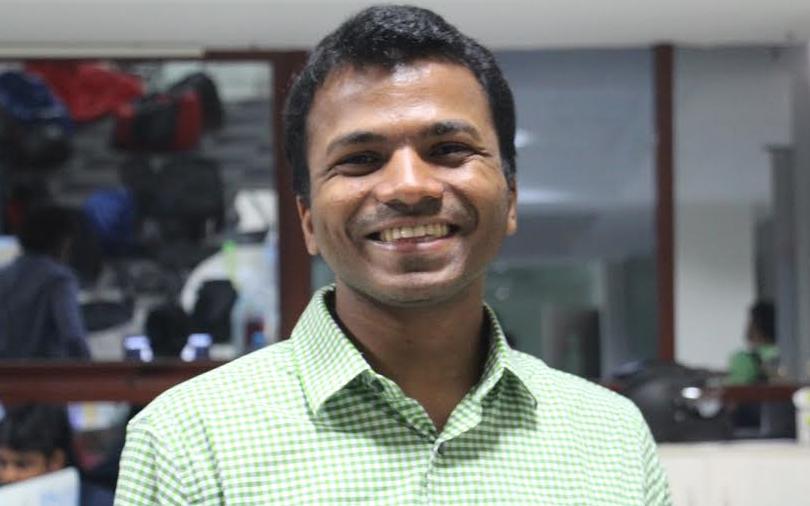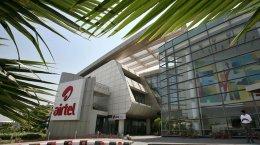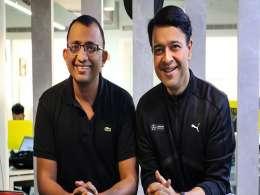Logistics startup BlackBuck, owned by Zinka Logistics Solutions Pvt. Ltd, recently raised $70 million (Rs 476 crore) in a Series C round from Sands Capital and other investors. In an exclusive interaction with VCCircle, CEO Rajesh Yabaji shares his views on the Tiger Global-backed company’s long-term goals for sustainable growth, products building and ramping up its technology infrastructure. Excerpts:
How did you find an opportunity in business-to-business (B2B) logistics?
It all goes back to my stint in ITC. There, my task was to transform the functioning of the supply chain. During that entire journey, I realised that logistics was a very tough, different and irrational space. It was not essentially a city-led problem. Most trucks and drivers were from the hinterlands. Most transportation also happened in remote areas, where there were industrial clusters and housing hubs. One does not encounter such issues in one’s day-to-day life and, therefore, it was not easy to innovate. The fact that logistics depend a lot on the external ecosystem, it is very difficult to control. I had also met my co-founders during this journey, and that helped me a great deal in setting up the business.
In a span of just two years, you have emerged as one of the most-funded Indian logistics startups. What worked for BlackBuck?
Typically, entrepreneurs come up with an idea they have a feel of, and keep experimenting and exploring with what they are trying to do. We knew the industry well, its depths and its problems. A scale thinking was applied across every aspect – right from recruitment and internal processes, to design, structuring and fund raising, or the investors we were able to bring on board. We were also complemented by a good second-rung leadership that practically runs the organisation.
Logistics is traditionally viewed as a capital-intensive sector. How did you manage to set up a good business on an asset-light and marketplace model?
The problem in India is not about assets. In logistics, it is more about the utilisation of assets and the quality of customer service. The execution of the entire shipment and the associated transactions have been a very painful process for both shippers and truckers for decades. The core problems of this industry were the huge amount of stake in the assets by truckers and shippers, under-utilisation and of service quality.
A marketplace approach to solving it was about enabling these players to do their business as easily as possible with, say, just a laptop. Having said that, the marketplace model has inherent problems of scaling – how to seed supply and demand. We believe BlackBuck has found a way to crack these problems and is scaling in that direction.
Building products has been a dominant theme of your fund deployment. Can you elaborate on that?
BlackBuck essentially offers a technology product that provides freight services. The problems of a shipper, among others, include placing an order, fixing the price of a particular shipment and tracking the shipment. Each of these functions has traditionally been a problem in shipment management. Now, we have architected each of these problems as a module in BlackBuck’s product stack.
Likewise, the core activities for a trucker involves doing a freight, listing inventory, getting the price fixed on the platform and getting paid for the services. But beyond enabling the trucker in managing his business, BlackBuck also addresses the various other needs of a trucker, including support services for purchasing a truck, fuel and ancillaries, among others.
BlackBuck acts as a culmination platform for all these functions on a single technology platform. All these functions and features are at different stages of maturity. So, the idea is to keep updating and introducing the next version of products for all functions and make the entire range of processes more scalable and more seamless.
What is the allocation towards technology? Which are BlackBuck’s core focus tech areas?
For us, there is no differentiation between the product and technology. The R&D spend between products and technology is also similar. If you specifically want to know in terms of the domain, technologies such as big data, AI (artificial intelligence) and ML (machine learning) are our core competence.
In an earlier interaction with VCCircle, you had talked about evaluating companies in the Internet-of-Things and product optimisation space for a possible acquisition. Are you considering an acquisition?
We are always on the lookout for companies that can append any of our tech verticals, be it the IoT team or the data sciences team. We are still evaluating a lot of companies and are yet to progress beyond that.
Also, if and when it happens, we will be looking at it more as acqui-hires rather than acquisitions. While evaluating companies to fuel our technology expansion through inorganic means, we will also be alternatively ramping up our in-house tech capabilities. We believe a singular approach to this problem may not work.
You had a technology partnership with Flipkart. Where does it stand now?
That was more of a mentorship kind of a role by Flipkart. Wherever we required support and direction, we basically utilise the larger Flipkart umbrella to help figure out ways to support. And, that is where it stands.
What are your expansion plans? Are you thinking of diversifying into other segments? Any plans to pivot into an asset-heavy model?
We are present in over 300 locations and have about 100,000 trucks on our platform. While we do not play by the number game, the idea is to keep adding on those two metrics.
One thing we have learned over the past two years is to focus on the full truck load (FTL) segment and the B2B space. About 87% of India’s cargo moves in the FTL way. So moving into the less-than-load (LTL) segment makes no sense for us.
We will continue to operate as a marketplace model. No plans whatsoever (to get into an asset-heavy model).
How do you see the foray of big players such as Mahindra & Mahindra into logistics?
The market is big enough to accommodate them. In fact, we need more big names to venture into this space, innovate and make the industry as simple as possible.
What is the roadmap going ahead when it comes to acquiring customers?
We work with over 400 customers. We will continue to scale, but it will be a function of the potential our different markets have to offer.
When do you expect to break even, and become profitable? Your next big round of funding…what would you likely need it for?
At this moment, we are in it for the long haul. Focusing more on long-term sustainability and scalability of the business. Having said that, the business will break even in the next couple of quarters.
At this point, we are not even thinking of the next fundraise, even at a preliminary level. In fact, we wish that the need to raise another round of external funding does not arise at all.
Where does the logistics market stand, and what about the space that you work in?
The Indian logistics market is worth $100 billion. The space we operate has a total market potential of $50-70 billion.
Do you have revenue targets or a targeted market share? There were news reports about achieving 10% of the organised freight movement and $2 billion worth of booking on your platform. What do you have to say?
We would not want to comment on these numbers, but we will do whatever it takes to achieve a dominant position in the sector. The figure of $2 billion and 10% of the organised freight movement is an extrapolation, rather than a statement by us.
Like this interview? Sign up for our daily newsletter to get our top reports.






